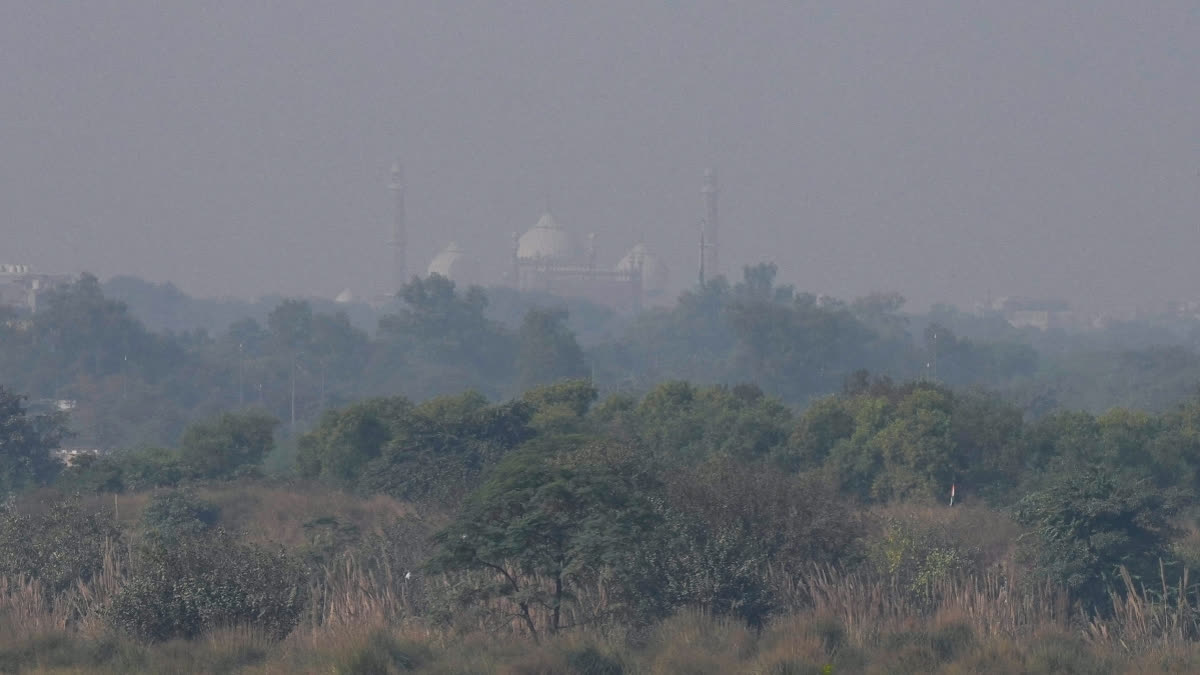New Delhi: After enduring nearly two months of hazardous air, Delhi residents finally breathed a sigh of relief as the city recorded its first 'moderate' Air Quality Index (AQI) reading in 50 days. On Wednesday, the AQI improved significantly to 163, down from 268 the previous day, marking a welcome reprieve from persistent pollution.
Favourable Weather Conditions Play a Role:
Prof SN Mishra, Former Director of Climate Services in the Indian Air Force, attributed the improved air quality to favourable atmospheric conditions.
“The strong north-westerly winds sweeping across northwest India, including the Indo-Gangetic plains, have dispersed pollutants, providing much-needed respite to Delhi residents,” he told ETV Bharat. These cold and dry winds have been a key factor in reducing pollution levels over the past four days.
Mishra noted, however, that this improvement might be temporary. “Similar conditions are expected to persist for another 3–4 days before weakening due to an approaching Western Disturbance. While air quality may slightly deteriorate afterwards, the respite has been a relief for the city’s residents,” he added.
November’s Pollution Crisis:
Throughout November, Delhi’s air quality swung between “very poor” and “severe” categories, exacerbated by local emissions, stubble burning in neighbouring states, and unfavourable weather conditions like weak winds and temperature inversions. Though the stubble-burning season is nearly over, local sources of pollution, such as vehicular emissions and industrial activities, remain significant contributors to the city’s poor air quality.
Forecast and Monitoring Updates:
The India Meteorological Department (IMD) forecasts strong winds to continue until December 7. However, with the arrival of a Western Disturbance, moderate fog is expected to set in starting December 8. Despite these changes, the air quality is likely to remain in the moderate category on Thursday before deteriorating to the 'poor' category over the weekend.
Citywide Air Quality Breakdown:
Out of Delhi’s 38 air quality monitoring stations, only one—Sri Aurobindo Marg—recorded 'very poor' air quality on Wednesday. Eight stations reported 'poor' air quality, while the rest showed 'moderate' levels, according to the Central Pollution Control Board (CPCB).
The CPCB classifies AQI readings as follows:
• 0–50: Good
• 51–100: Satisfactory
• 101–200: Moderate
• 201–300: Poor
• 301–400: Very Poor
• Above 400: Severe
The primary pollutants on Wednesday were PM2.5 and PM10, with levels recorded at 66.8 µg/m³ and 149.5 µg/m³, respectively. Both pollutants pose serious health risks, especially PM2.5, which can penetrate deep into the lungs and enter the bloodstream.
Challenges in Monitoring Pollution Sources:
The Decision Support System (DSS), which tracks pollution sources, has not been updated since November 26. A Commission for Air Quality Management (CAQM) official cited ongoing system development and outdated data as the reasons for the lapse. The last DSS report indicated that vehicular emissions contributed between 21 per cent and 24.6 per cent of Delhi’s PM2.5 levels, while 'other sources' accounted for up to 24.6 per cent.
Weather and Temperature Insights:
Alongside the cleaner air, Delhi experienced slightly warmer temperatures. The maximum temperature on Wednesday was recorded at 28°C, three degrees above normal, while the minimum stood at 12.5°C, 2.5 degrees above the seasonal average. Humidity levels ranged between 66 per cent and 44 per cent. The IMD has predicted mist for Thursday, with temperatures likely to range between 10°C and 26°C.
A Temporary Respite:
While Delhi residents are savouring the cleaner air, experts stress the need for long-term measures to combat pollution. Short-term solutions like the Graded Response Action Plan (GRAP) have provided relief, but addressing vehicular emissions, industrial pollutants, and construction dust remains critical for sustainable improvement in air quality. Without sustained action, Delhi’s air quality will continue to rely on favourable weather conditions or a mere chance for improvement.
Read More:



